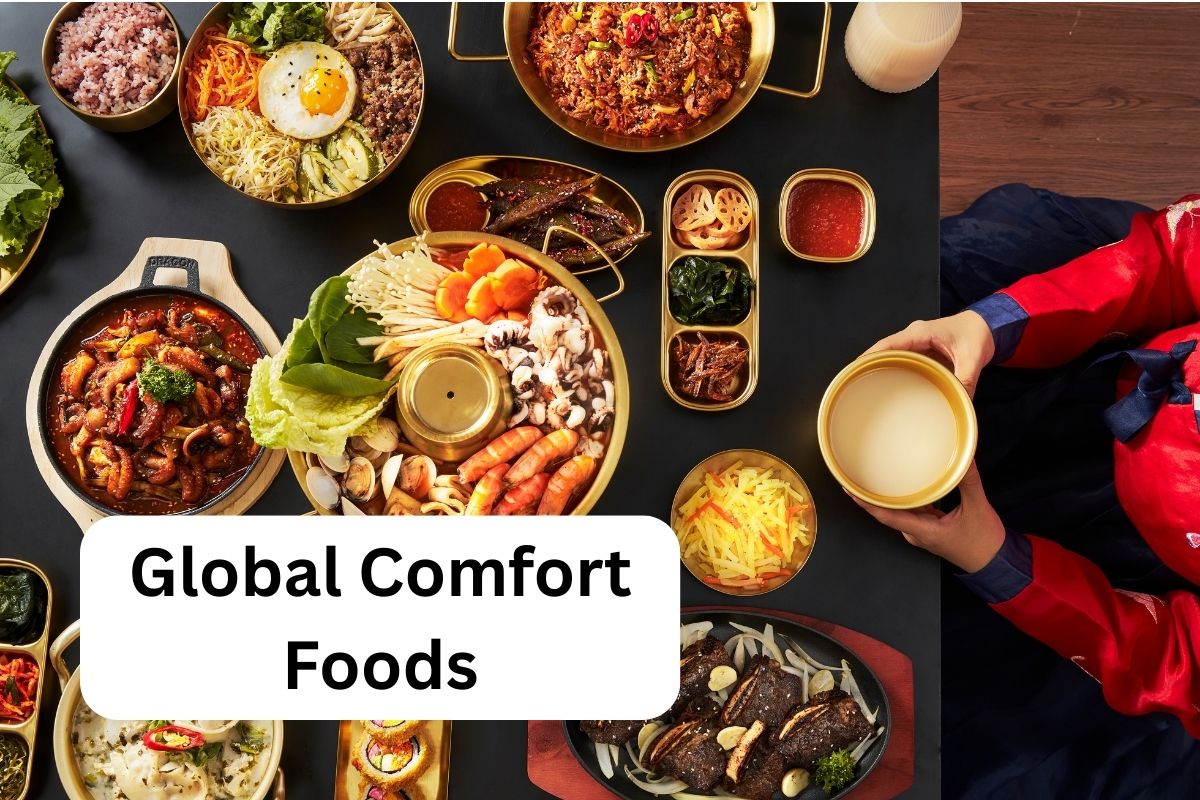Food has always been a universal language that connects cultures, traditions, and emotions. While comfort foods like ramen, tacos, biryani, and kebabs have deep cultural roots, the modern culinary world is witnessing a global twist: fusion comfort foods. These creative versions combine the essence of traditional dishes with new flavors, ingredients, and techniques, making them appealing to a worldwide audience.
In this article, we’ll explore the fascinating rise of global comfort food fusion, its cultural impact, and how dishes like ramen, tacos, biryani, and kebabs are evolving in 2025.
The Rise of Global Comfort Foods
Comfort foods are more than just meals—they evoke nostalgia, security, and joy. In today’s interconnected world, chefs and food enthusiasts are pushing boundaries by blending cuisines. This trend has led to innovative fusion dishes that honor tradition while embracing experimentation.
The demand for global comfort food fusion is driven by:
- Cultural curiosity: People want to explore international flavors.
- Food tourism: Travel inspires chefs to merge culinary traditions.
- Social media trends: Instagram and TikTok highlight unique food mashups.
- Health-conscious dining: Many fusion recipes use lighter, plant-based alternatives.
Fusion Ramen – Tradition Meets Innovation
Classic Ramen Origins
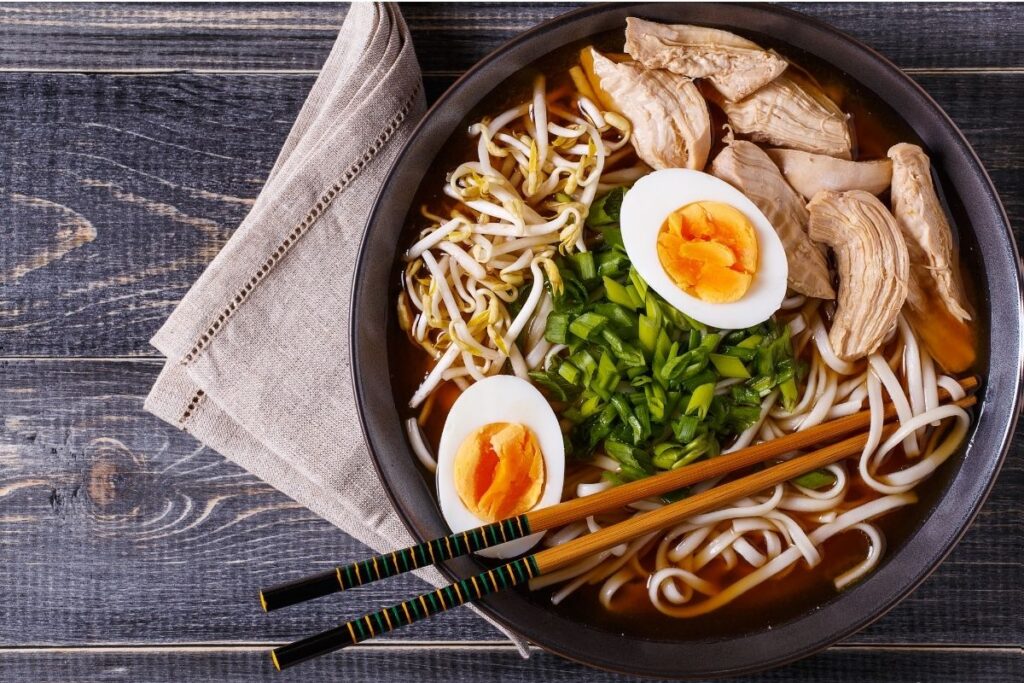
Ramen, a Japanese noodle soup, is cherished for its rich broth, springy noodles, and umami-packed toppings.
Fusion Ramen Variations
- Korean Kimchi Ramen – Spicy broth with kimchi and gochujang.
- Mexican Ramen – Topped with avocado, jalapeños, and a lime-chili broth.
- Italian Ramen – Parmesan-infused broth with basil, garlic, and meatballs.
- Vegan Ramen – Creamy miso with tofu, mushrooms, and seaweed.
Fusion ramen not only appeals to adventurous eaters but also demonstrates how flexible traditional dishes can be.
Fusion Tacos – Beyond the Border
Classic Taco Roots
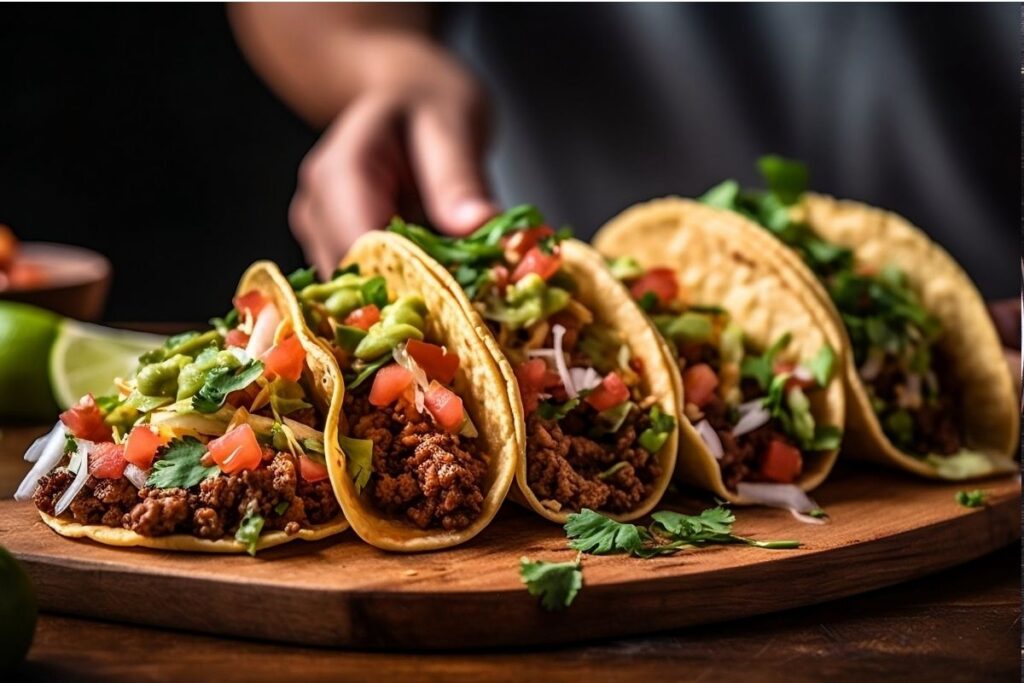
Tacos originated in Mexico, offering endless possibilities with tortillas, meats, beans, and salsas.
Fusion Taco Trends
- Sushi Tacos – Fresh tuna, salmon, and seaweed salad wrapped in a crispy shell.
- Indian Curry Tacos – Filled with butter chicken or paneer tikka.
- Korean BBQ Tacos – Bulgogi beef topped with spicy kimchi slaw.
- Mediterranean Tacos – Hummus, falafel, and tzatziki inside pita-style tortillas.
Tacos are one of the easiest dishes to transform globally due to their portable, versatile nature.
Fusion Biryani – Spicing Things Up Globally
Traditional Biryani
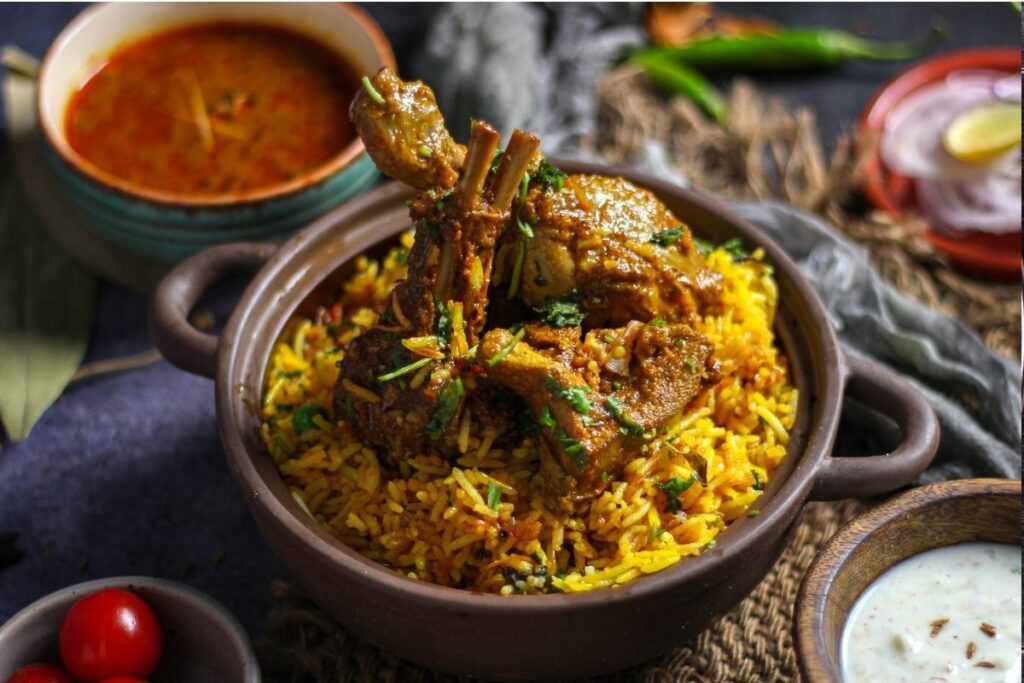
Biryani, a fragrant rice dish with origins in South Asia, blends aromatic spices, rice, and protein (chicken, lamb, or vegetables).
Global Biryani Innovations
- Mexican Biryani – Incorporating salsa, beans, and jalapeños.
- Thai Biryani – With lemongrass, coconut milk, and shrimp.
- Italian Biryani – Infused with tomato, basil, and mozzarella.
- Fusion Veggie Biryani – Loaded with quinoa and global spices.
These innovative versions showcase how biryani’s layered cooking style adapts well to international palates.
Fusion Kebabs – Skewers Around the World
Traditional Kebabs
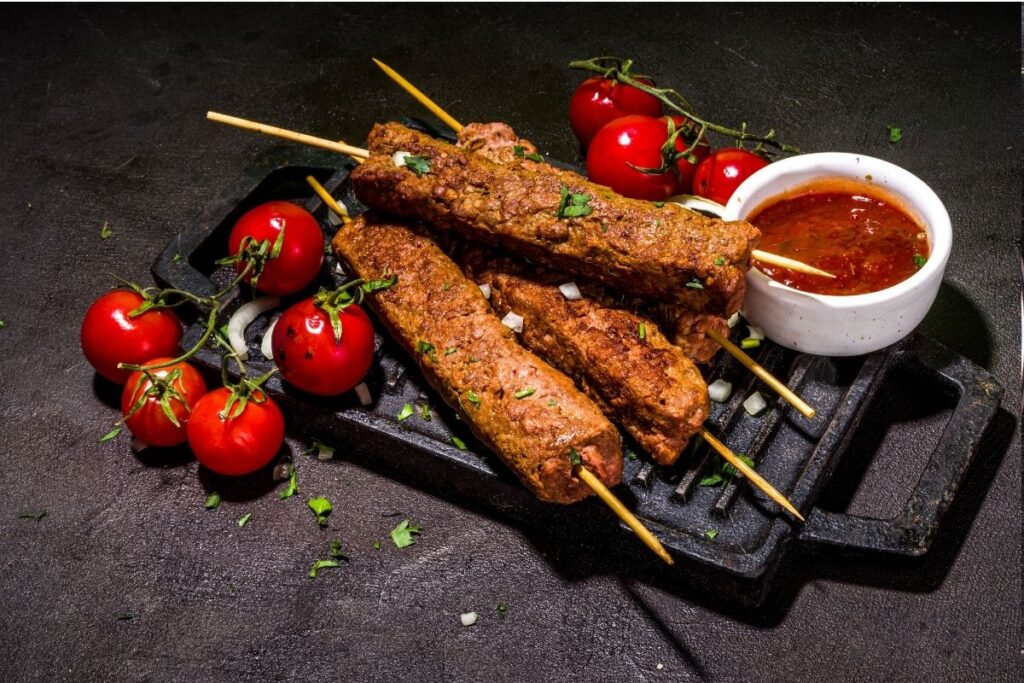
Kebabs, originating from the Middle East, involve skewered, grilled meats or vegetables seasoned with spices.
Fusion Kebab Styles
- Teriyaki Chicken Kebab – A Japanese twist with sweet soy glaze.
- Tex-Mex Kebab – Beef skewers with salsa and guacamole.
- Greek Fusion Kebab – Lamb with feta and tzatziki.
- Vegan Kebabs – Using mushrooms, tofu, or jackfruit with global marinades.
Fusion kebabs have become popular at food trucks and fine dining alike due to their simplicity and flavor versatility.
Comparative Table of Global Comfort Food Fusion
| Dish | Traditional Origin | Popular Fusion Variations | Key Ingredients |
|---|---|---|---|
| Ramen | Japan | Kimchi ramen, Mexican ramen, Italian ramen, Vegan ramen | Noodles, broth, toppings |
| Tacos | Mexico | Sushi tacos, Indian curry tacos, Korean BBQ tacos, Mediterranean tacos | Tortillas, protein, salsa |
| Biryani | South Asia | Mexican biryani, Thai biryani, Italian biryani, Veggie fusion | Rice, spices, protein |
| Kebabs | Middle East | Teriyaki kebabs, Tex-Mex kebabs, Greek kebabs, Vegan kebabs | Skewered meats/veggies |
Why Global Comfort Food Fusion Matters
- Cultural Appreciation – Fusion dishes encourage respect and curiosity toward different cuisines.
- Innovation in Dining – Restaurants attract food lovers by offering creative, Instagram-worthy meals.
- Health & Sustainability – Many fusion comfort foods are plant-based or lighter versions of classics.
- Emotional Connection – Even with global twists, these dishes still provide the comfort factor.
Global comfort foods reflect how cuisine continues to evolve in today’s interconnected world. Fusion ramen, tacos, biryani, and kebabs show that while traditions remain strong, innovation keeps them relevant. These dishes are more than just meals—they’re cultural stories on a plate, connecting people across borders.
As we move into 2025, the trend of fusion comfort foods is expected to grow, inspiring chefs and home cooks to experiment and share flavors in exciting new ways.
FAQs
1. What are global comfort foods?
Global comfort foods are traditional meals enjoyed worldwide that evoke nostalgia and satisfaction. Fusion versions blend international flavors for a modern twist.
2. Why is fusion food so popular today?
Fusion food combines cultural curiosity, global travel, and social media trends, making unique dishes more accessible and appealing.
3. Can fusion comfort foods be healthy?
Yes. Many fusion dishes use plant-based proteins, fresh vegetables, and lighter cooking methods, making them healthier.
4. What are examples of fusion tacos?
Sushi tacos, Korean BBQ tacos, Indian curry tacos, and Mediterranean-inspired tacos are popular fusion versions.
5. How do chefs create fusion comfort foods?
Chefs experiment with traditional recipes, swapping ingredients or techniques from other cuisines while preserving the comfort factor.
